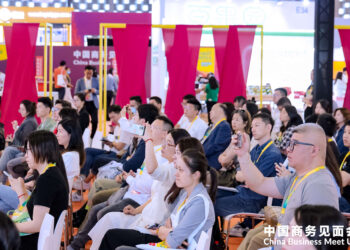No products in the basket.
 |
NINGBO, China, Aug. 13, 2024 /PRNewswire/ — In a remote Xuanpei village, Dongqiao town, Haishu district of Ningbo, a plant with special architecture is located, amidst the mountains. It is the SUS Ningbo Mingzhou Waste-to-Energy Project (hereinafter referred to as Ningbo Project).
Operating since June, 2017, Ningbo Project has processed about 6.07 million tonnes municipal solid waste and produced about 200 million kWh green on-grid power, reducing GHG emission, approximately 2.19 million tonnes of carbon dioxide and receiving over 60,000 visitors. However, Ningbo Project does more than just turns waste into treasure.
Low Carbon Emission: Taking the Lead on Real-time Carbon Monitoring and Smart Incineration
Waste-to-Energy (WtE) is the mainstream of waste resourcing all over the world. In China, WtE is developing at high speed, achieving an annual processing capacity of 244 million tonnes by the end of 2022, accounting for 72.5% of waste management. Despite its prominence as a primary waste disposal method, the carbon emission from WtE has been a significant emerging environmental concern. Currently, accurately identifying and monitoring carbon emission poses substantial challenge for the WtE industry.
Municipal solid waste, different from fossil fuel, mainly contains fossil component and biological component. The biological component will not contribute to the greenhouse gas effect since it automatically integrates into atmospheric circulation. Therefore, only the carbon in fossil component will be focused during carbon emissions accounting. However, challenges persist always arises from the complexity of waste component, significant spatial and temporal fluctuations, distinct regional characteristics and variability in fossil carbon content.
In February 2023, National Key R&D Project and China-Austria Intergovernmental IUR Cooperation Project titled Real-time Carbon Monitoring and Smart Incineration Aiming at Low Carbon Emissions and High Energy Efficiency in Waste-to-Energy Plant: Technology Development and Demonstration has been kicked off in Shanghai. Led by SUS ENVIRONMENT, the project designated the Ningbo Project as China‘s first demonstration project of real-time carbon monitoring and smart incineration.
Through cooperation with universities and research institutions, such as Zhejiang University, Shanghai Jiaotong University, Vienna University of Technology and Vienna Institute for Resources and Waste, this partnership aims to develop a carbon source identification and carbon emission monitoring technologies applicable to Chinese WtE plants. The initiative will establish a sampling-free system for fossil/biogenic carbon source identification and real-time carbon emission monitoring with high temporal resolution and accuracy. This effort addresses the critical challenge of accurately identifying and monitoring carbon emissions in WtE operations.
After a year of refinement, the real-time carbon monitoring and smart incineration system operates smoothly, achieving a milestone as the first system which realizes high accurate and real-time monitor with over 92% monitoring accuracy and a frequency of every 5 minutes. The Smart Incineration has enhanced the boiler efficiency by 2.5%, facilitating higher energy production. The entire integrated system will be an essential technologies for improving efficiency, reducing pollution and cutting carbon emission.
Ultra Clean: Implementing More Stricter Emission Standard than Chinese Standard and the European Union Standard
In terms of flue gas cleaning system, Ningbo Project adopts “seven-steps” flue gas cleaning process which adds SCR and wet scrubber tower in addition to ” five-steps” flue gas cleaning process. The flue gas emission standard in Ningbo Project is stricter than the Chinese standard (GB18485-2014) and the European Union standard (2010/75/EU).
More PIMBY: Advocating the Concepts of Ecological Environmental Protection and Promoting Community Engagement
As National Ecological Environment Science Base, Ningbo Project has constructed the national’s first waste incineration museum, using interactive media to display the whole process of waste collection, transportation and disposal. Over 140 local schools with 14,000 students and visitors have experienced the environmental education activities provided by Ningbo Project. And as an Industrial Tourism Demonstration Site in Zhejiang Province, Ningbo Project has hosted more than 60,000 visitors from all walks of life and become a prime model for Ningbo environmental education.
Committing to creating a cleaner and more friendly living environment, Ningbo Project devotes to promote community engagement through maintaining village infrastructures, offering job opportunities and providing recycling business from bottom ash to bricks for local residents. Ningbo Project not only turns waste into treasure, but also wins residential trust relying on advanced waste disposal technologies and community engagement.
Source : Low Carbon Emissions, Ultra Clean and More PIMBY. The WtE Project is Beyond Your Imagination
The information provided in this article was created by Cision PR Newswire, our news partner. The author's opinions and the content shared on this page are their own and may not necessarily represent the perspectives of Thailand Business News.
Discover more from Thailand Business News
Subscribe to get the latest posts sent to your email.
Please login to join discussion











